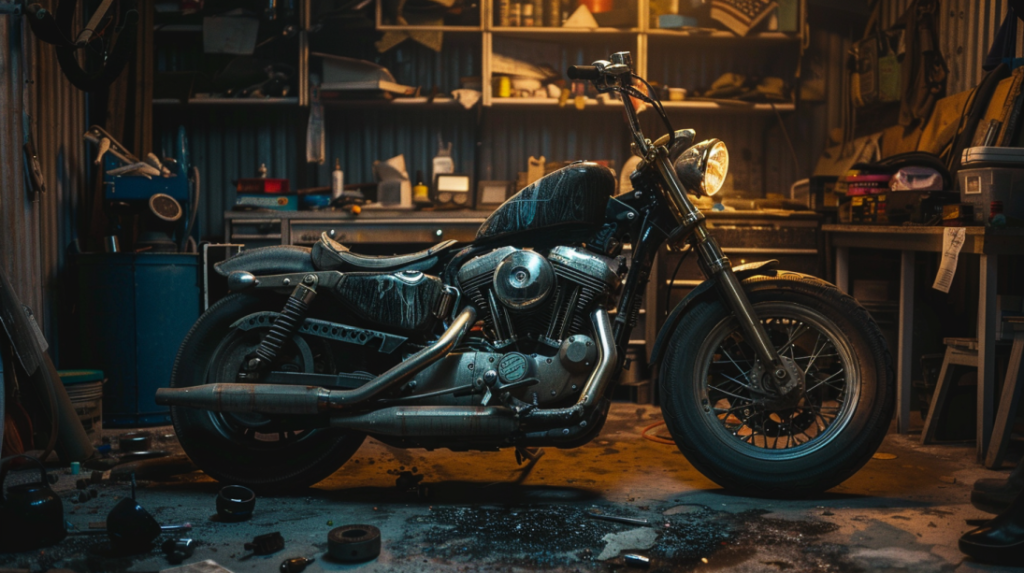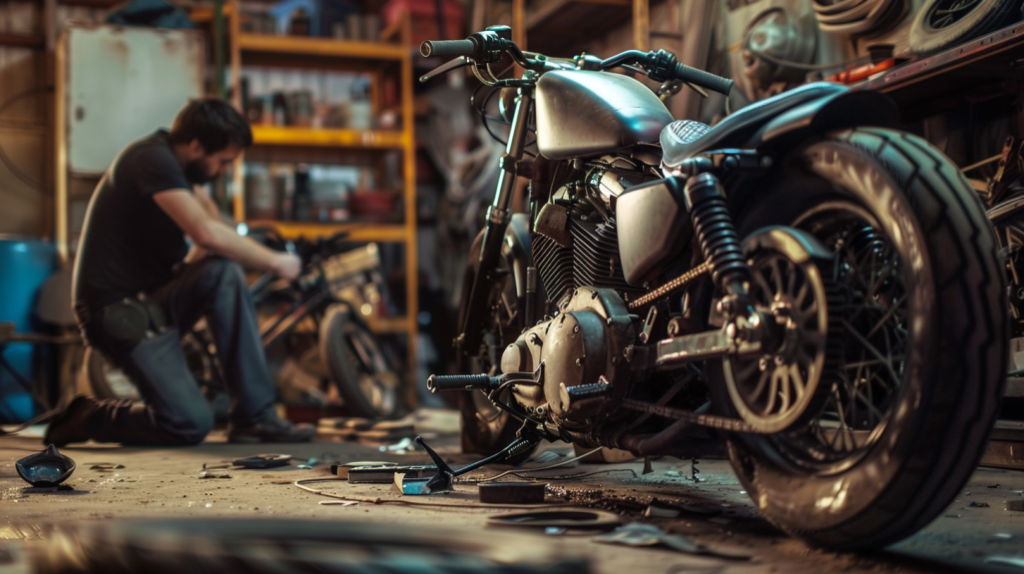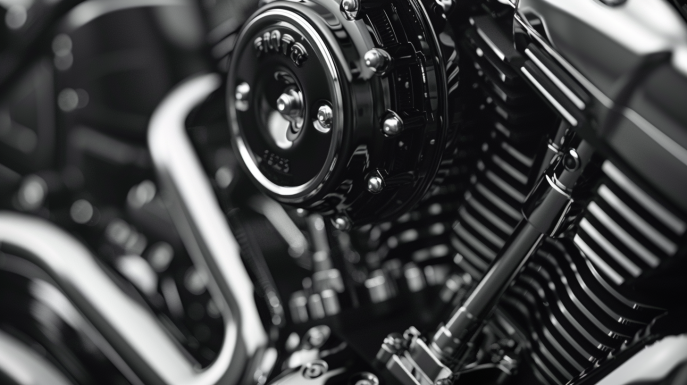If you own a Harley-Davidson Switchback, you might face several common issues. Excessive vibrations in every gear, especially at high speeds, can destabilize the bike. The Twin Cam engine often causes these vibrations, affecting performance and comfort. Master cylinder failures may lead to brake fluid leaks and a loss of braking power, demanding immediate attention. Battery problems can result in starting issues and weak electrical performance. Stock exhaust systems also produce annoying vibrations. Regular checks can prevent oil leaks, and suspension problems might reduce ride quality. Stay tuned to explore potential solutions and modifications for a smoother ride.
Key Takeaways
- Excessive vibrations occur in every gear and at high speeds, affecting stability.
- Twin Cam engine issues impact performance, making long rides uncomfortable.
- Master cylinder failures can cause brake fluid leaks and loss of braking power.
- Battery problems lead to starting issues and electrical complications.
- Stock exhaust system vibrations are common, but aftermarket options can reduce them.
Related: Round ‘Em Up: What Year Harleys To Avoid? (Full Overview)
Excessive Vibrations

Many Harley-Davidson Switchback owners report excessive vibrations in every gear and at high speeds, which can compromise the stability of items in the saddlebags. If you’re feeling every pulse and rattle, you’re not alone. This vibration issue has been a common grievance among Switchback owners, leading to a quest for solutions that align with the freedom and comfort you expect from your ride.
Initially, dealerships struggled to pinpoint the exact cause of these excessive vibrations. While some replaced motor mounts and exhaust systems, the results were mixed, leaving many riders dissatisfied. Corporate tech services even deemed the vibration normal for FLD103 models, adding to the frustration.
However, the resilient spirit of the riding community shines through. Online forums have become a haven for Switchback owners to share their experiences and solutions.
Many have turned to aftermarket modifications like Vance & Hines slip-on mufflers and stage 1 breathers, which have proven effective at reducing vibrations for some.
Twin Cam Issues

Among the myriad of problems Switchback owners face, Twin Cam issues stand out due to their significant impact on the bike’s performance and reliability. These engines, while known for their power, often suffer from vibration issues that can undermine your riding experience and stability. Many riders feel a palpable dissatisfaction when these vibrations are deemed ‘normal’ by corporate tech services, leaving you yearning for a smoother ride.
To visualize the typical challenges, consider these points:
- Persistent Vibrations: These aren’t just minor inconveniences; they can make long rides uncomfortable and even unsafe.
- Aftermarket Modifications: Some riders turn to Vance & Hines slip-on mufflers or stage 1 breathers to reduce vibrations, but these fixes aren’t always a one-size-fits-all solution.
- Dealer Struggles: Many dealerships find it difficult to pinpoint and address these vibration issues, adding to the frustration.
Despite the Harley-Davidson Switchback’s reputation for solid construction, these Twin Cam engines can be a double-edged sword. With the right aftermarket modifications, you might mitigate some issues, but the quest for stability and satisfaction can feel elusive. You’re not just riding; you’re seeking freedom on the open road, and these issues shouldn’t hold you back.
Related read: 7 Harley Twin Cam Years to Avoid (+ Their Problems, and Why)
Master Cylinder Failure
Experiencing master cylinder failure on your Harley-Davidson Switchback can lead to dangerous brake fluid leaks and a significant loss of braking power. This isn’t just an inconvenience; it’s a critical safety concern. Imagine cruising down the open road, only to discover your brake pedal feels soft and spongy. Suddenly, that sense of freedom turns into anxiety.
| Symptom | Potential Consequence | Emotional Impact |
|---|---|---|
| Soft brake pedal | Reduced stopping power | Anxiety |
| Brake fluid leaks | Brake system failure | Fear |
| Spongy brake feel | Unpredictable braking | Distrust |
You might notice puddles of brake fluid under your bike or a soft brake pedal when you hit the brakes. Addressing these symptoms immediately is crucial for your safety and peace of mind. Replacing a faulty master cylinder usually requires professional expertise and specific tools to make sure everything’s installed correctly.
Regular maintenance is your best ally. By keeping a close eye on your master cylinder and performing routine inspections, you can prevent unexpected failures and maintain that liberating riding experience you love. Don’t let a master cylinder failure compromise your safety and freedom on the road.
Battery Problems

When your Harley-Davidson Switchback faces battery problems, you’re likely to encounter starting issues and electrical complications. You might notice dimming headlights or a slow cranking engine, all pointing to potential battery or charging system faults.
Regular maintenance and upgrading to a high-performance battery can help mitigate these problems.
Starting Issues
Starting issues with the Harley-Davidson Switchback often stem from battery problems, leading to difficulties like weak cranking or no power to electrical components. When your bike struggles to start, it’s often a sign that the battery voltage is too low. This can be especially enthusiastic if you’re keen to hit the open road but find yourself powerless.
Consider these common scenarios:
- Weak Cranking: You turn the key, and the engine barely turns over. This often points to a battery that’s not holding a full charge.
- No Power to Electrical Components: Lights, horn, and other electrical components aren’t responding. This could mean your battery is completely drained.
- Intermittent Starting Issues: Sometimes it starts, sometimes it doesn’t. This inconsistency is often due to fluctuating battery voltage.
To avoid these issues, regularly check your battery voltage, especially in colder weather. Upgrading to a higher quality battery or using a battery tender can make a significant difference.
Electrical Complications
You’ll often find that electrical complications on the Harley-Davidson Switchback are closely tied to battery problems. Battery drain is a frequent issue, leaving you stranded at inopportune moments. Charging system malfunctions can exacerbate this, preventing the battery from replenishing its charge. Faulty connections add another layer of frustration, causing unpredictable electrical performance.
Regular maintenance is your best friend here. By routinely checking your battery’s health and making sure all connections are secure, you can nip potential problems in the bud. Symptoms to watch for include difficulty starting your bike, dimming lights, or intermittent power loss. These signs aren’t just annoyances—they’re warnings that something’s amiss.
Don’t let these issues chain you down. Embrace the freedom of the open road by seeking professional assistance when needed. A skilled mechanic can diagnose and resolve battery-related issues efficiently, allowing you to ride with confidence.
In the end, staying vigilant and proactive about your bike’s electrical health guarantees that your Switchback remains a reliable companion on all your adventures. So, take charge, maintain regularly, and don’t hesitate to get expert help when symptoms arise.
Exhaust System Issues
Experiencing vibration issues with the stock exhaust system on the Harley-Davidson Switchback is a common complaint among owners. The relentless shaking can detract from the joy of riding, making it feel like you’re constantly battling the bike rather than enjoying the open road. Thankfully, there are ways to address these issues and reclaim the freedom you’re yearning for. Many owners have turned to aftermarket modifications to reduce these troublesome vibrations effectively.
Here are three common solutions that Switchback owners have found useful:
- Vance & Hines Slip-On Mufflers: These aftermarket options are popular for their ability to minimize vibrations and enhance performance.
- Stage 1 Breathers: By improving airflow, these modifications can reduce the strain on your exhaust system, leading to a smoother ride.
- Complete Aftermarket Exhaust Systems: Replacing the stock exhaust entirely with a well-engineered aftermarket system can drastically cut down on vibrations and improve overall ride quality.
Switching to aftermarket exhaust systems not only helps with vibration issues but also allows you to customize your ride to better fit your style and performance needs. Embrace these modifications, and you’ll find yourself riding with newfound freedom and confidence.
Oil-Related Concerns
Oil-related concerns are a significant issue for Harley-Davidson Switchback owners, with common complaints involving leaks from various engine components. You might notice oil leaks from the clutch cable, front engine housing, side cover bolts, or the front master cylinder cap. These leaks can dampen your riding freedom, but with the right maintenance tips, you can keep your bike in top shape.
First, regularly check torque specs and inspect for any seepage. Tighten bolts as needed to prevent leaks. If you’re facing persistent issues, don’t hesitate to look into warranty coverage for replacements. Forum members often share their experiences with similar problems, so tapping into community support can be invaluable. For instance, some riders have had the front master cylinder cap replaced under warranty due to leaks.
Even with diligent care, pinpointing the exact source of an oil leak can be challenging. One forum member reported minimal problems after 54K miles on a 2012 Switchback but still found it tricky to identify specific leak origins.
Engage with the community, start new threads, and share your findings—collective wisdom can often lead to practical solutions for your Harley-Davidson Switchback.
Suspension Problems
When dealing with suspension problems on your Harley-Davidson Switchback, you might notice issues like shocks bottoming out or excessive bouncing, which can greatly affect ride quality and handling. These problems aren’t just minor inconveniences—they can seriously impact your riding experience and safety.
Here are some common suspension problems you might encounter:
- Shocks Bottoming Out: When the shocks can’t absorb impacts properly, you feel every bump and pothole on the road, making for an uncomfortable ride.
- Excessive Bouncing: Poor damping can lead to a bouncy ride, reducing stability and making it harder to control your Switchback.
- Uneven Tire Wear: Issues with the springs or shocks can cause uneven tire wear, which affects both handling and safety.
To liberate yourself from these problems, consider upgrading to aftermarket suspension components. This can drastically improve your Switchback’s ride quality and overall comfort.
Regular maintenance and inspections of your suspension system are also essential. By staying on top of these tasks, you can prevent potential issues before they become major problems.
Embrace the freedom of the open road without the hindrance of suspension woes by taking proactive steps to make sure your Switchback rides smoothly and reliably.
Frequently Asked Questions
Is the Harley Switchback a Girls Bike?
Don’t let stereotypes define your ride. The Harley Switchback isn’t just a “girl’s bike.” It’s versatile, comfortable, and powerful. Choose based on your style and needs, not outdated labels. Ride what you love.
What Is the Fuel Mileage on a Harley Switchback?
You’ll get about 42-47 miles per gallon on a Harley Switchback. With a 5-gallon tank, you can travel roughly 210-235 miles. Regular maintenance and smooth riding can help you maximize your fuel efficiency.
Is the Harley Switchback a Dyna?
Absolutely, the Harley Switchback is part of the Dyna lineup. Don’t let the grass grow under your feet; ride with the freedom and versatility it offers, blending cruiser comfort and touring capability seamlessly. Enjoy the journey!
How Much Does a Harley Dyna Switchback Weigh?
You’re curious about the Harley Dyna Switchback’s weight? It typically weighs around 696 pounds. Understanding this weight helps you master its handling and performance, giving you the freedom to ride with confidence and control.
Conclusion
In the end, taking care of your Harley-Davidson Switchback boils down to this: an ounce of prevention is worth a pound of cure. By staying on top of common issues like excessive vibrations, Twin Cam problems, and oil leaks, you’ll keep your ride smooth and reliable.
Don’t let minor problems become major headaches. Regular maintenance guarantees your Switchback stays your trusty road companion for many miles to come. So, keep an eye on those trouble spots and enjoy the ride!




Leave a Reply
You must be logged in to post a comment.